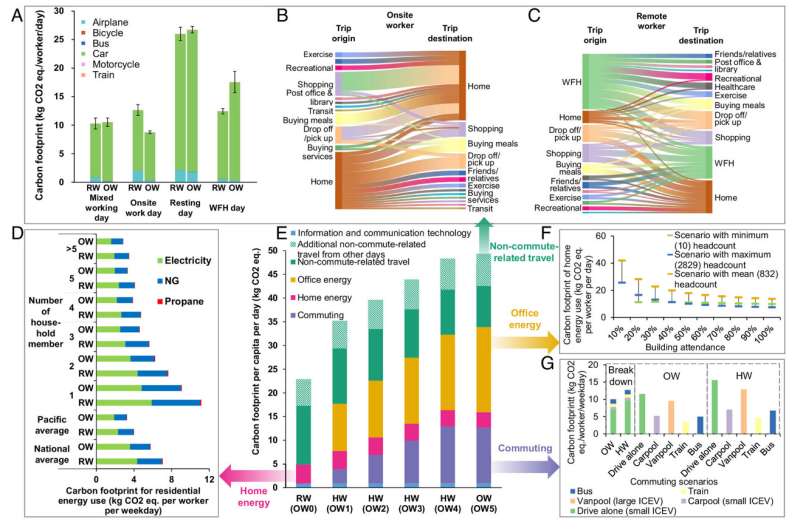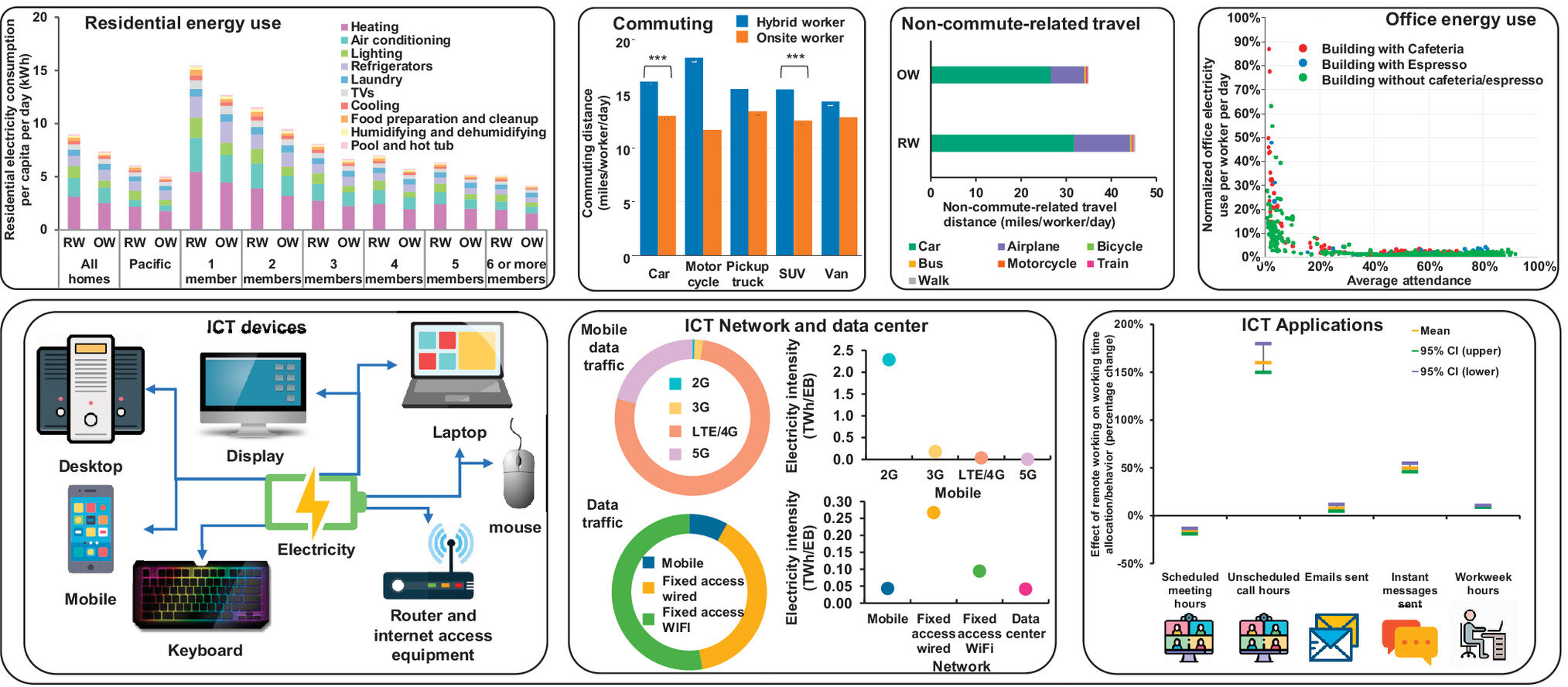Remote workers can have a 54% lower carbon footprint compared with onsite workers, according to a new study by Cornell University and Microsoft, with lifestyle choices and work arrangements playing an essential role in determining the environmental benefits of remote and hybrid work.
The study, published in the Proceedings of the National Academy of Sciences, also finds that hybrid workers who work from home two to four days per week can reduce their carbon footprint by 11% to 29%, but working from home one day per week is more negligible, cutting carbon footprint by only 2%.
“Remote work is not zero carbon, and the benefits of hybrid work are not perfectly linear,” said study senior author Fengqi You, professor in energy systems engineering at Cornell. “Everybody knows without commuting you save on transportation energy, but there’s always lifestyle effects and many other factors.”
The main contributors to carbon footprint for onsite and hybrid workers, according to the study, are travel and office energy use. That’s no surprise to researchers quantifying the impact of remote work on the environment, but Cornell and Microsoft used survey data and modeling to incorporate factors sometimes overlooked when calculating carbon footprint, including residential energy use based on time-use allocation, non-commute distance and mode of transportation, communications device usage, number of household members and office configuration, such as seat sharing and building size.

Notable findings and observations include:
- Non-commute travel, such as trips to social and recreational activities, becomes more significant as the number of remote workdays increases.
- Seat sharing among hybrid workers under full-building attendance can reduce carbon footprint by 28%.
- Hybrid workers tend to commute farther than onsite workers due to differences in housing choices.
- The effects of remote and hybrid work on communications technologies such as computer, phone and internet usage have negligible impacts on overall carbon footprint.
“Remote and hybrid work shows great potential for reducing carbon footprint, but what behaviors should these companies and other policymakers be encouraging to maximize the benefits?” said Longqi Yang, principal applied research manager at Microsoft and corresponding author of the study. “The findings suggest organizations should prioritize lifestyle and workplace improvements.”
You said the study finds that companies and policymakers should also focus on incentivizing public transportation over driving, eliminating office space for remote workers and improving energy efficiency for office buildings.
“Globally, every person, every country and every sector have these kinds of opportunities with remote work. How could the combined benefits change the whole world? That’s something we really want to advance our understanding of,” said Yanqiu Tao, a doctoral student and the study’s first author.
The study leveraged survey data from Microsoft, the American Time Use Survey, the National Household Travel Survey and the Residential Energy Consumption Survey.
More information:
Tao, Yanqiu et al, Climate mitigation potentials of teleworking are sensitive to changes in lifestyle and workplace rather than ICT usage, Proceedings of the National Academy of Sciences (2023). DOI: 10.1073/pnas.2304099120.
Citation:
Remote work can slash your carbon footprint, if done right (2023, September 18)
retrieved 18 September 2023
from https://phys.org/news/2023-09-remote-slash-carbon-footprint.html
This document is subject to copyright. Apart from any fair dealing for the purpose of private study or research, no
part may be reproduced without the written permission. The content is provided for information purposes only.
Denial of responsibility! My Droll is an automatic aggregator of Global media. In each content, the hyperlink to the primary source is specified. All trademarks belong to their rightful owners, and all materials to their authors. For any complaint, please reach us at – [email protected]. We will take necessary action within 24 hours.


